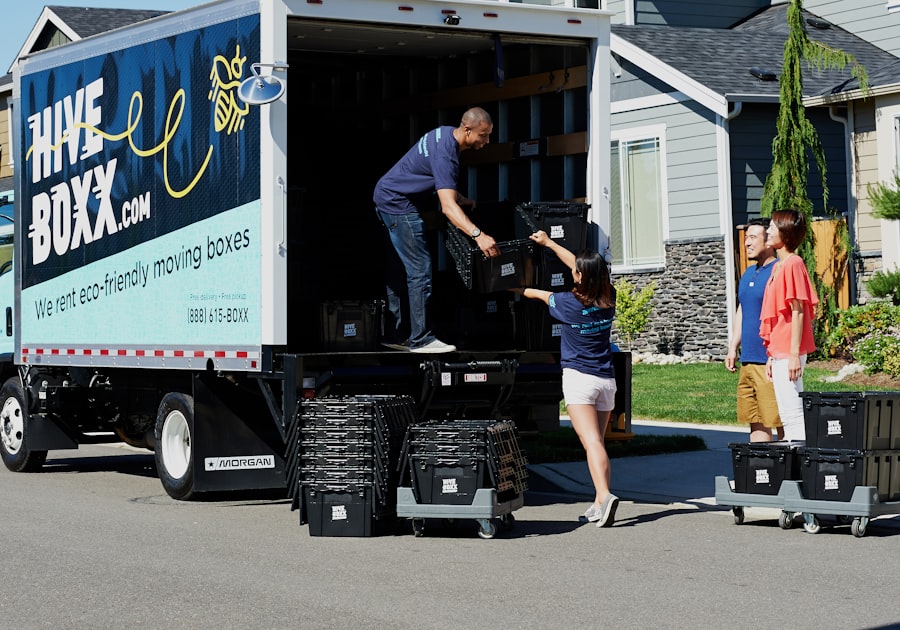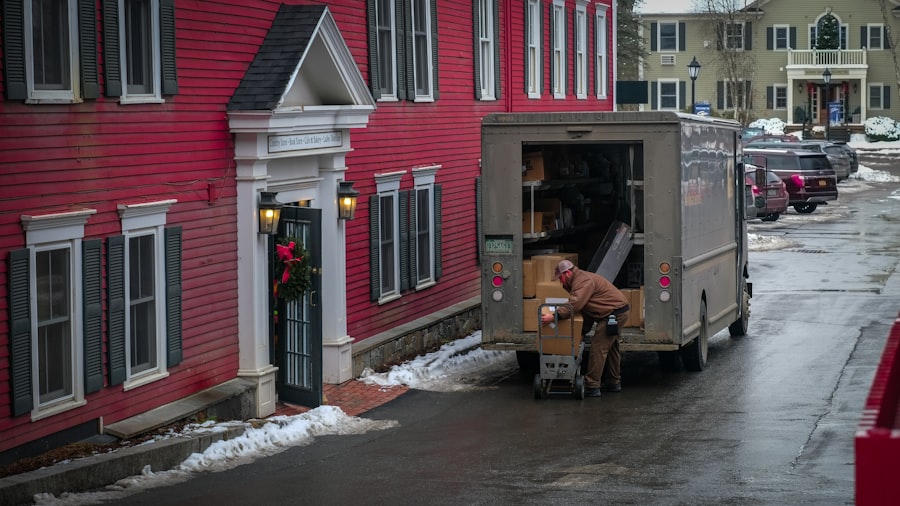Moving a manufactured home is a multifaceted process that requires careful planning and execution. Unlike traditional homes, manufactured homes are built in a factory and transported to their final location, which means that the logistics of moving them can be quite different. The first step in this process is to understand the specific requirements and regulations that govern the relocation of manufactured homes.
Each state has its own set of rules regarding permits, transport, and installation, which can significantly impact the moving process. For instance, some states may require special permits for oversized loads, while others may have specific guidelines for the disconnection and reconnection of utilities. Additionally, the physical aspects of moving a manufactured home involve several critical steps.
The home must be properly prepared for transport, which includes securing all loose items, detaching utilities, and ensuring that the structure is adequately supported for the journey. This preparation is crucial to prevent damage during transit. The actual move typically involves specialized equipment such as flatbed trucks and cranes, depending on the size and weight of the home.
Understanding these logistical details is essential for anyone considering moving a manufactured home, as it sets the foundation for a successful relocation.
Key Takeaways
- Moving a manufactured home requires careful planning and understanding of the entire process.
- Research and compare local movers to find reliable services and competitive quotes.
- Verify that the mover is properly licensed and insured for your protection.
- Prepare your home thoroughly before the move to avoid damage and delays.
- Clear communication and coordination with the mover are essential for a smooth relocation.
Researching local manufactured home movers
Once you have a grasp of the moving process, the next step is to research local manufactured home movers. This involves identifying companies that specialize in transporting manufactured homes and have a solid reputation in your area. Start by seeking recommendations from friends, family, or online forums dedicated to manufactured home living.
Websites like Yelp or Angie’s List can provide valuable insights into customer experiences with various movers. Look for companies that have been in business for several years, as longevity often indicates reliability and expertise in handling such moves. In addition to personal recommendations, it’s essential to check online reviews and ratings for potential movers.
Pay attention to comments regarding their punctuality, professionalism, and ability to handle unexpected challenges during the move. It’s also beneficial to visit the websites of these companies to gather information about their services, equipment, and any additional offerings they may provide, such as storage solutions or assistance with setup at the new location. By conducting thorough research, you can create a shortlist of movers who are well-equipped to handle your specific needs.
Comparing quotes and services offered by different movers

After identifying potential movers, the next step is to compare quotes and services offered by each company. It’s advisable to request detailed estimates from at least three different movers to ensure you have a comprehensive understanding of the costs involved. When obtaining quotes, be sure to ask for a breakdown of all charges, including transportation fees, labor costs, and any additional expenses such as permits or insurance.
This transparency will help you make an informed decision based on your budget. In addition to cost comparisons, consider the range of services each mover provides. Some companies may offer full-service options that include packing, loading, transporting, and setting up your manufactured home at the new site.
Others may only provide transportation services, leaving you responsible for disconnection and reconnection of utilities. Evaluate what level of service you require based on your own capabilities and preferences. A mover that offers comprehensive services may save you time and stress, while a more basic service might be more cost-effective if you are willing to handle some aspects of the move yourself.
Ensuring the mover is licensed and insured
| Metric | Description | Typical Value/Range | Importance |
|---|---|---|---|
| License Verification | Confirming the mover holds a valid state or federal moving license | Valid USDOT or state license number | High – Ensures legal operation |
| Insurance Coverage Type | Types of insurance held by the mover (e.g., liability, cargo, workers’ compensation) | Liability and cargo insurance minimum coverage | High – Protects customer belongings and liability |
| Insurance Coverage Amount | Monetary limit of insurance coverage | Typically 100,000 to 1,000,000+ | High – Determines extent of financial protection |
| Insurance Expiration Date | Validity period of the mover’s insurance policy | Current and active at time of move | High – Ensures coverage during service |
| Complaints and Claims History | Number of complaints or claims filed against the mover | Lower is better; ideally zero or minimal | Medium – Indicates reliability and professionalism |
| Verification Method | How the license and insurance are verified (online database, direct contact) | FMCSA website, state regulatory agency | High – Ensures authenticity |
Before finalizing your choice of mover, it is crucial to ensure that they are properly licensed and insured. Licensing requirements for manufactured home movers vary by state; therefore, it’s important to verify that the company holds all necessary permits to operate legally in your area. You can typically find this information on the mover’s website or by contacting them directly.
A licensed mover demonstrates compliance with local regulations and standards, which can provide peace of mind during the moving process. Insurance is another critical factor to consider when selecting a mover. A reputable company should carry liability insurance that protects both their workers and your property during transit.
This coverage is essential in case of accidents or damage that may occur while your home is being moved. Request proof of insurance from potential movers and review their policy details carefully. If a mover cannot provide adequate insurance documentation, it may be wise to look elsewhere.
Ensuring that your chosen mover is both licensed and insured not only safeguards your investment but also reflects their professionalism and commitment to quality service.
Preparing your manufactured home for the move
Preparing your manufactured home for relocation is a vital step that requires meticulous attention to detail. Begin by decluttering your home; remove any personal items or loose objects that could shift during transport. This not only helps prevent damage but also makes the packing process more manageable.
Next, focus on securing all windows and doors to ensure they remain closed during transit. It’s also advisable to take photographs of your home’s interior and exterior before the move; these images can serve as documentation in case any issues arise during transportation. Another critical aspect of preparation involves disconnecting utilities such as water, electricity, and gas.
Contact your utility providers well in advance to schedule disconnections on moving day. Additionally, if your manufactured home has been anchored or tied down at its current location, you will need to arrange for these supports to be removed by a professional before transport can begin. This step is crucial for ensuring that your home is ready for safe relocation without sustaining structural damage.
Communicating with the mover and coordinating the move

Effective communication with your chosen mover is essential for ensuring a smooth transition during the moving process. Once you have selected a mover, establish clear lines of communication regarding timelines, expectations, and any specific requirements you may have. Discuss the details of the move in depth; this includes confirming pickup and delivery dates, discussing any potential obstacles along the route, and addressing any concerns you might have about the logistics involved.
Coordination is equally important as you approach moving day. Create a detailed schedule that outlines each step of the process, from disconnection of utilities to arrival at the new site. Share this schedule with your mover so they can prepare accordingly.
If there are any changes or unexpected developments leading up to the move, communicate these promptly to avoid confusion on moving day. A well-coordinated effort between you and your mover can significantly reduce stress and ensure that everything goes according to plan.
Understanding the costs and timeline of the move
Understanding the costs associated with moving a manufactured home is crucial for effective budgeting. The total cost can vary widely based on several factors including distance between locations, size of the home, complexity of the move (such as navigating difficult terrain), and additional services requested from the mover. On average, moving a manufactured home can range from $1,000 to $5,000 or more depending on these variables.
It’s important to factor in not just transportation costs but also potential expenses related to permits, utility disconnections/reconnections, and site preparation at the new location. The timeline for moving a manufactured home can also vary significantly based on similar factors. Generally speaking, you should expect the entire process—from initial planning through to settling into your new location—to take several weeks or even months.
This timeline includes time spent researching movers, obtaining quotes, preparing your home for transport, and coordinating logistics with your chosen mover. Being aware of these timelines allows you to plan accordingly and ensures that you are not caught off guard by delays or unexpected challenges.
Tips for a smooth and successful manufactured home move
To ensure a smooth and successful move of your manufactured home, consider implementing several practical tips throughout the process. First and foremost, start planning well in advance; this will give you ample time to research movers, gather necessary permits, and prepare your home without feeling rushed. Creating a checklist can help keep you organized and ensure that no detail is overlooked as you approach moving day.
Another valuable tip is to maintain open lines of communication with all parties involved in the move—this includes your mover, utility providers, and anyone else who may be assisting with logistics. Regular updates can help address any concerns promptly and keep everyone on track with timelines and expectations. Additionally, consider visiting your new site ahead of time if possible; this allows you to assess any potential challenges related to access or setup before moving day arrives.
Lastly, remain flexible throughout the process; unexpected issues may arise despite careful planning. Whether it’s inclement weather or logistical challenges with transportation routes, being adaptable can help alleviate stress when things don’t go exactly as planned. By following these tips and maintaining a proactive approach throughout your manufactured home move, you can navigate this complex process with greater ease and confidence.



